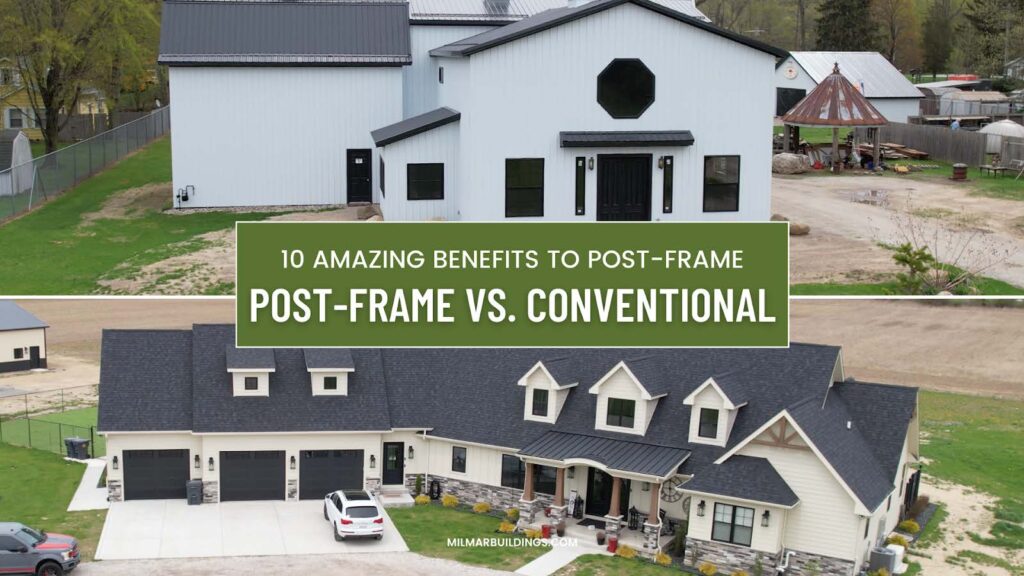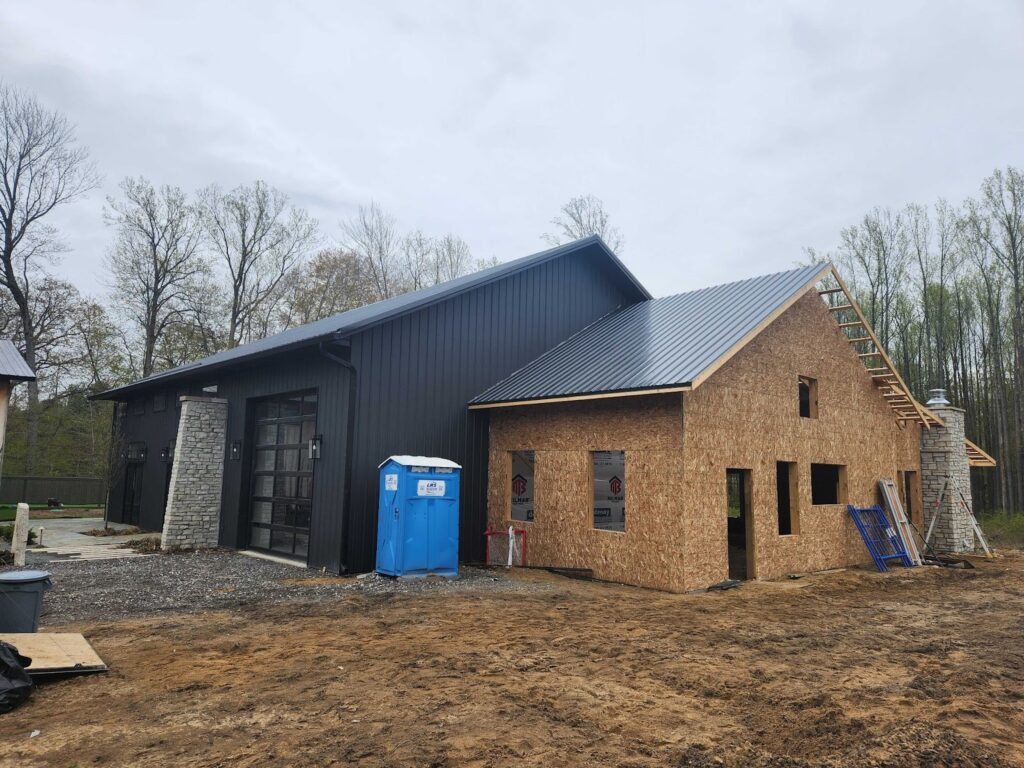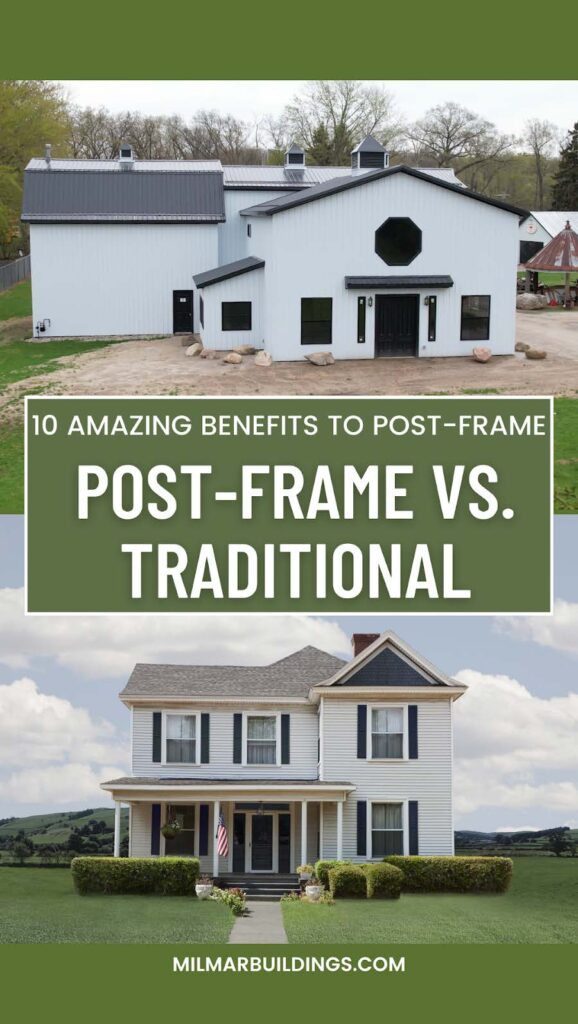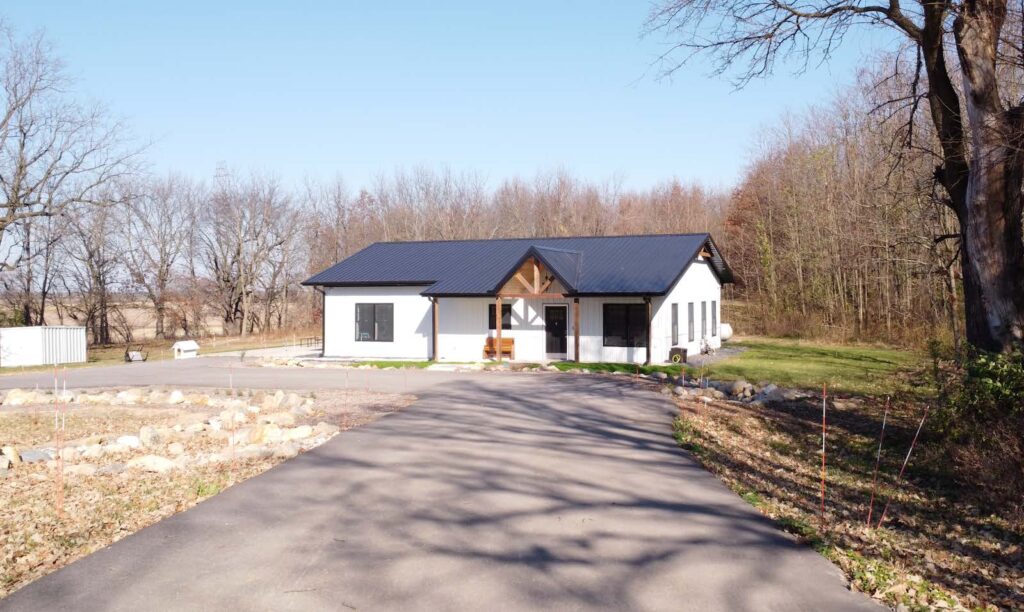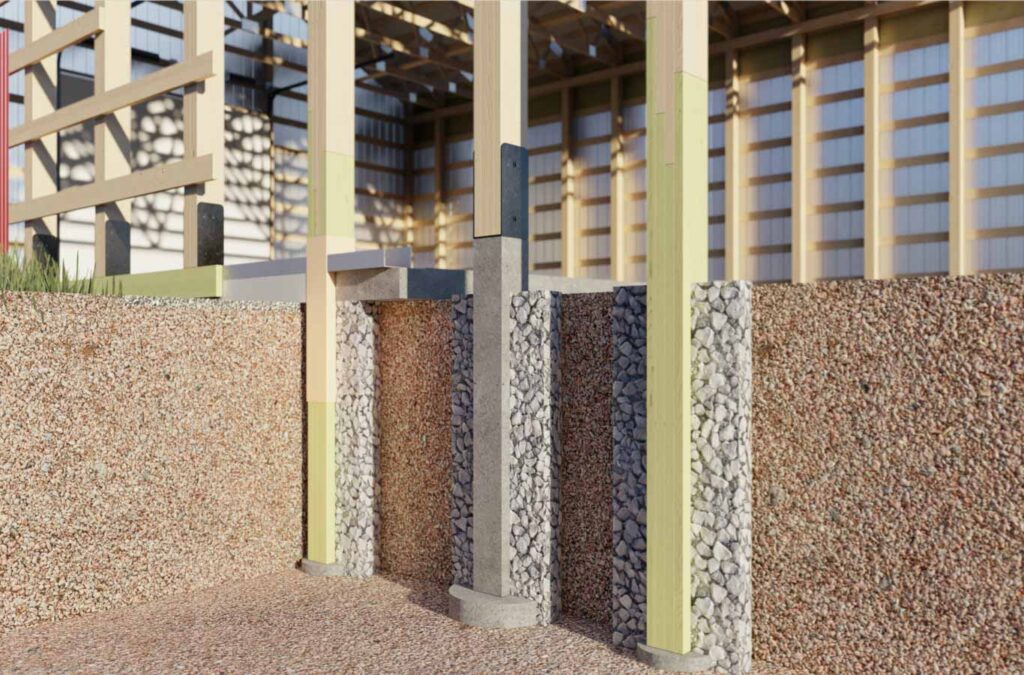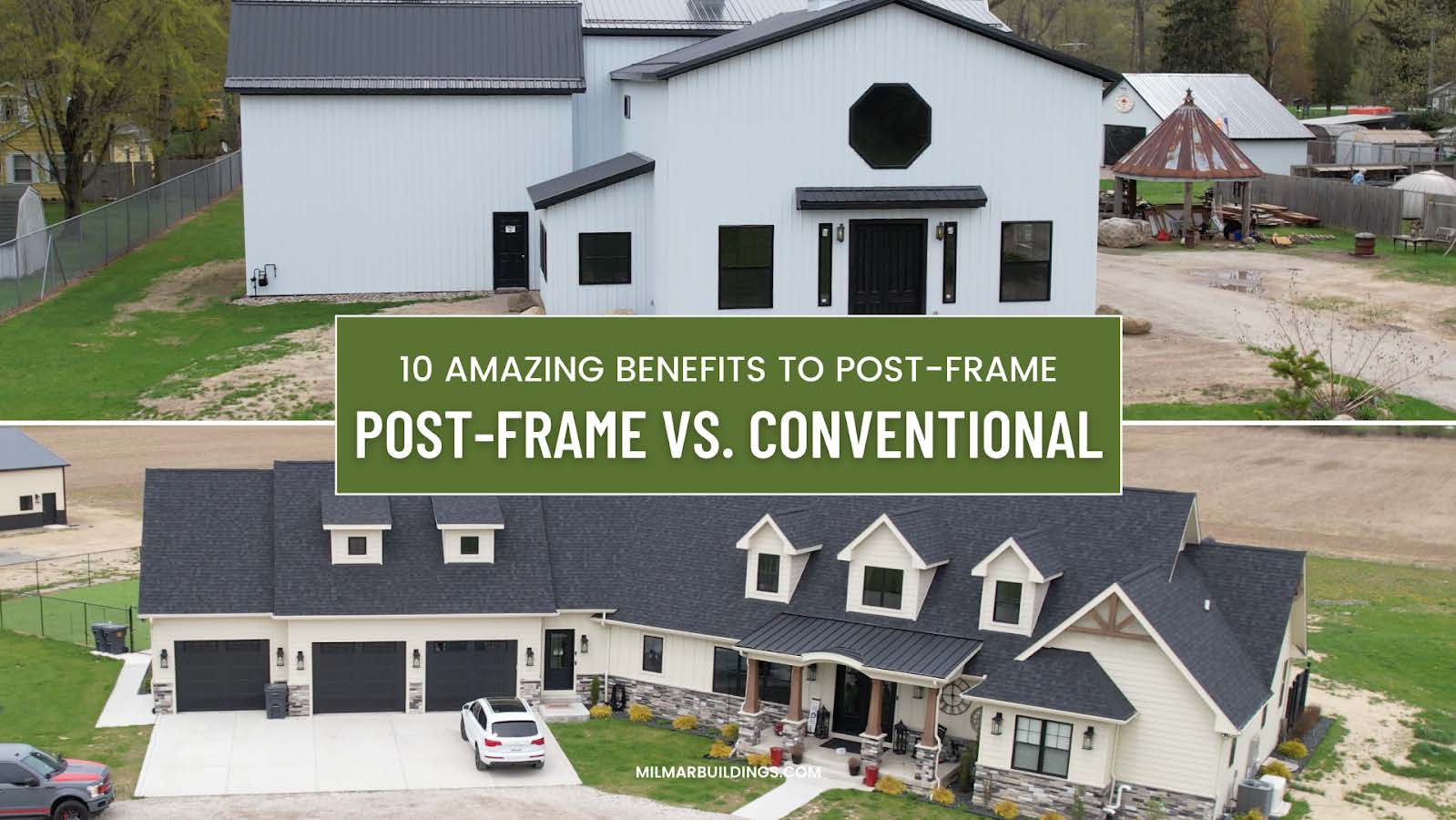
What are the benefits to Post Frame Buildings?
Post-Frame vs. Traditional
10 Benefits to Building a Post Frame Building
What is the difference between post-frame buildings and traditional buildings?
Post-frame construction is a cost-effective approach to building structures. This is due to the fact that unlike traditional stick-frame buildings, post-framing does not necessitate a continuous poured foundation, which accounts for roughly 15% of the total cost. Additionally, fewer materials are required, resulting in less labor and ultimately making post-frame construction buildings more economical to erect.
HERE ARE TEN BENEFITS TO POST-FRAME BUILDINGS
While traditional construction has its merits, post-frame construction offers a range of benefits that make it a compelling choice for many building projects. As compared to traditional construction, here are some of the benefits of post-frame buildings:
Cost-effective
Pole barn buildings are known for being cost-effective compared to traditional construction methods. They require fewer materials and labor, which translates to lower overall costs. Additionally, since they were originally designed to be more functional rather than decorative, the cost of finishing materials like siding, drywall, and roofing can also be reduced.
Versatile
Post-frame buildings can be designed and customized to fit almost any need. The flexible design of post-frame construction allows for a variety of configurations and sizes, so you can create a building that is perfectly suited for your intended use. Pole barn buildings can be used for many purposes, such as a storage shed, a workshop, a garage, or even a home.
Durable
Pole barns that are constructed properly are incredibly durable and able to withstand harsh weather conditions, including heavy snow, strong winds, and harsh temperatures. This is due to their sturdy post-frame construction, which is designed to distribute weight evenly across the structure. Additionally, the use of pressure-treated wood and steel roofing and siding means that pole barn buildings are resistant to rot, pests, and other common issues associated with traditional construction.
Energy-efficient
Post-frame construction allows for greater insulation options, which can make pole barn buildings more energy-efficient than traditional construction. The open framing design of a pole barn building makes it easy to add insulation with less thermal breaks to walls and ceilings, reducing energy consumption and lowering heating and cooling costs.
Low maintenance
Pole barn buildings are low-maintenance structures. The materials used in construction, such as steel roofing and siding, require little upkeep and are resistant to rust, corrosion, and rot. The durability of pole barn buildings also means that they can require fewer repairs and have a longer lifespan than traditional construction.
Sustainability
In addition to being energy-efficient, pole barn buildings are also environmentally friendly. The use of sustainable materials, the reduction of the need to use a wood sheathing underlayment, and the ability to add insulation and energy-efficient features make pole barn buildings an eco-friendly building option.
Quick Construction
Pole barn buildings are known for their quick construction times. Since they require fewer materials and labor, the construction process is usually faster than traditional construction methods. Additionally, pole barns can be constructed in any season, including the winter months, which can save time and money.
Aesthetics
While traditional construction methods offer more options for multiple roof pitches and irregular exterior walls, pole barns can compete with any exterior options that stick-built can offer, while maintaining simpler rooflines and a cleaner looking finish.
Building Codes:
By using high quality materials, and pre-engineered trusses and footings, post-frame buildings can help with obtaining permits faster than traditional methods. Stick-built homes may cost more as well if they require a full engineering review and prints in order to build.
Customization:
Contrary to popular belief, pole barns offer many options for designs and customizations. The interior walls can be easily changed once they are built because the interior walls do not change the structural integrity of the building. Designing post-frame homes can be easier with no restrictions on where load bearing walls have to be placed to support the roof.
Conclusion
Which is better?
Overall, pole barn buildings are cost-effective, versatile, offer a plethora of flexible designs, open floor plans, quick construction, durability and energy efficiency. Ultimately, the choice between pole barn buildings and traditional construction methods will depend on individual needs, preferences, and budget. If you are considering building a new structure, whether it be for agricultural, commercial, or residential purposes, a pole barn or post-frame building may be the ideal solution.
–
Written by Shane Ferris
Shane is a graduate from Master’s Baptist College out of North Dakota. As a video production specialist, Shane has been involved in business marketing and advertising since 2018. In addition to his professional pursuits, Shane actively participates in his local church and takes pleasure in engaging in various church activities. Several times each year, he embarks on trips to different countries to provide aid to charitable organizations and non-profits. To promote and encourage involvement, Shane employs his video and photography expertise, offering these services to his clients and non-profits alike. At MilMar Buildings Shane is a part of the marketing team implementing strategies for social media content and growth.
